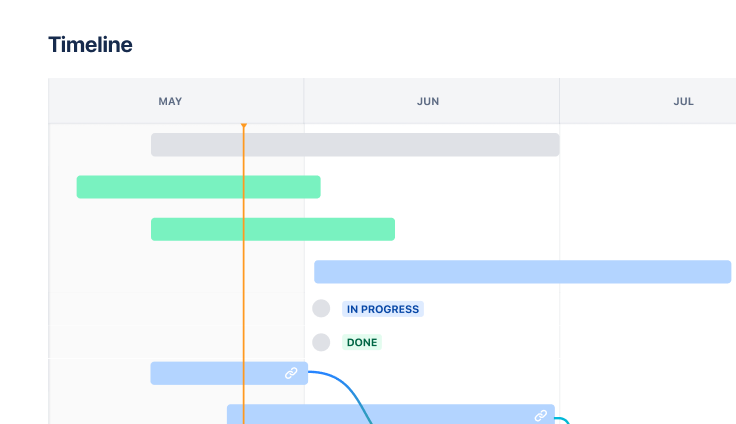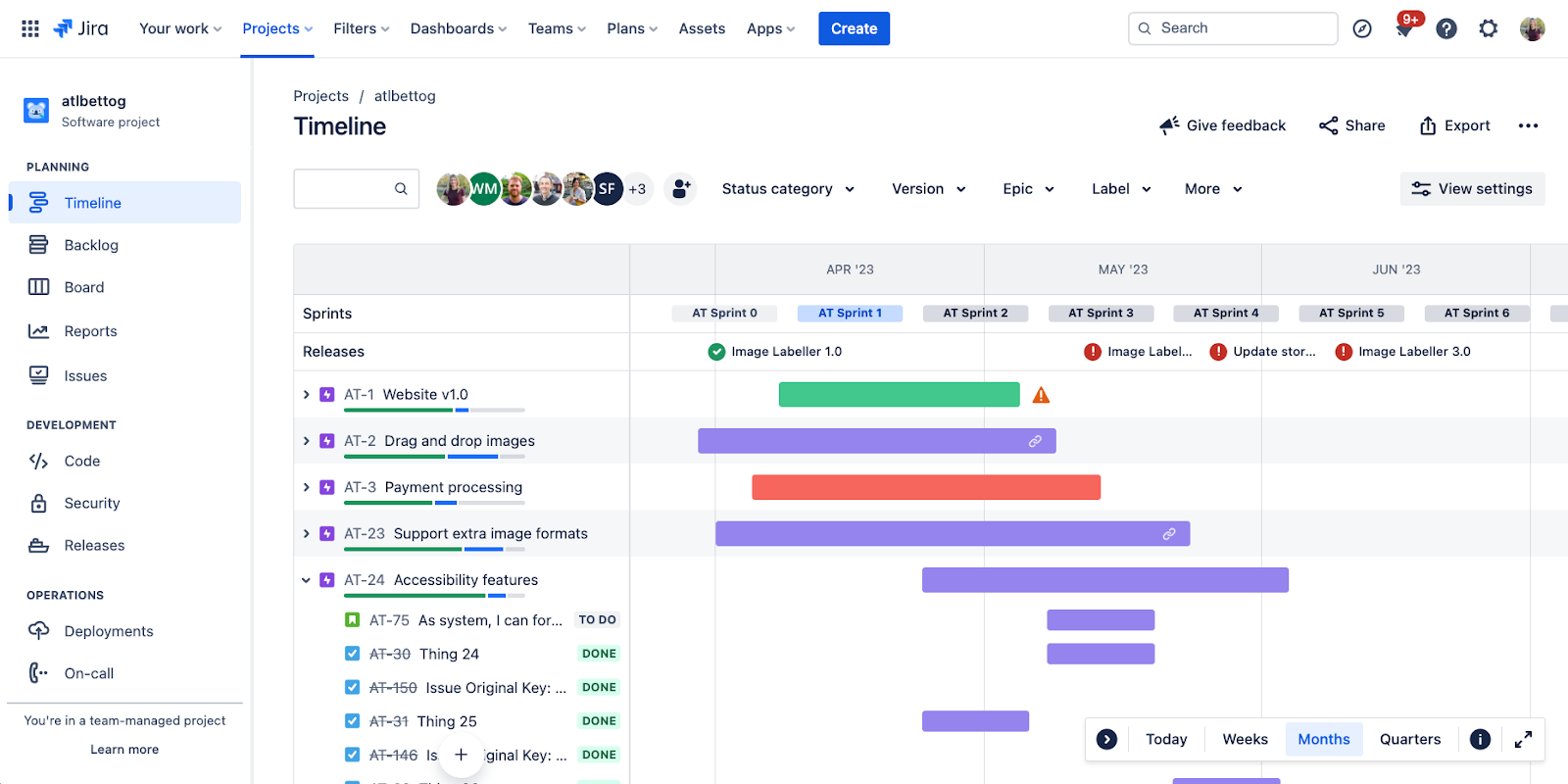
Agile roadmap template
An Agile roadmap template provides a clear, real-time view that enables teams to collaborate, schedule, and adjust strategic objectives leveraging the Agile methodology.
BEST FOR
Project management
Software development
KEY FEATURES
Task planning
Prioritization
Pipeline management

What is an Agile roadmap template?
Visual representation
An Agile roadmap template visually outlines the strategic direction, priorities, and planned activities for an Agile project or the product development process. Project managers often create visual representations such as timelines or Gantt charts that use different elements such as bars or color-coded segments. The timeline may show iterations or sprints along with their corresponding goals, which can help team members and stakeholders track progress and understand the sequence of activities.
Dynamic planning tool
Teams can quickly adjust to changing requirements while focusing on primary goals. This helps promote transparency, collaboration, and stakeholder alignment.
What is an Agile roadmap template?

Structured framework
An Agile product roadmap template is a structured framework that articulates the product’s purpose and desired outcomes for the entire development process. It helps:
Align teams and stakeholders with the product’s long-term goals and objectives.
Coordinate iterative plans, feature prioritization, and milestone sequencing.
Enable focused and strategic decision-making.
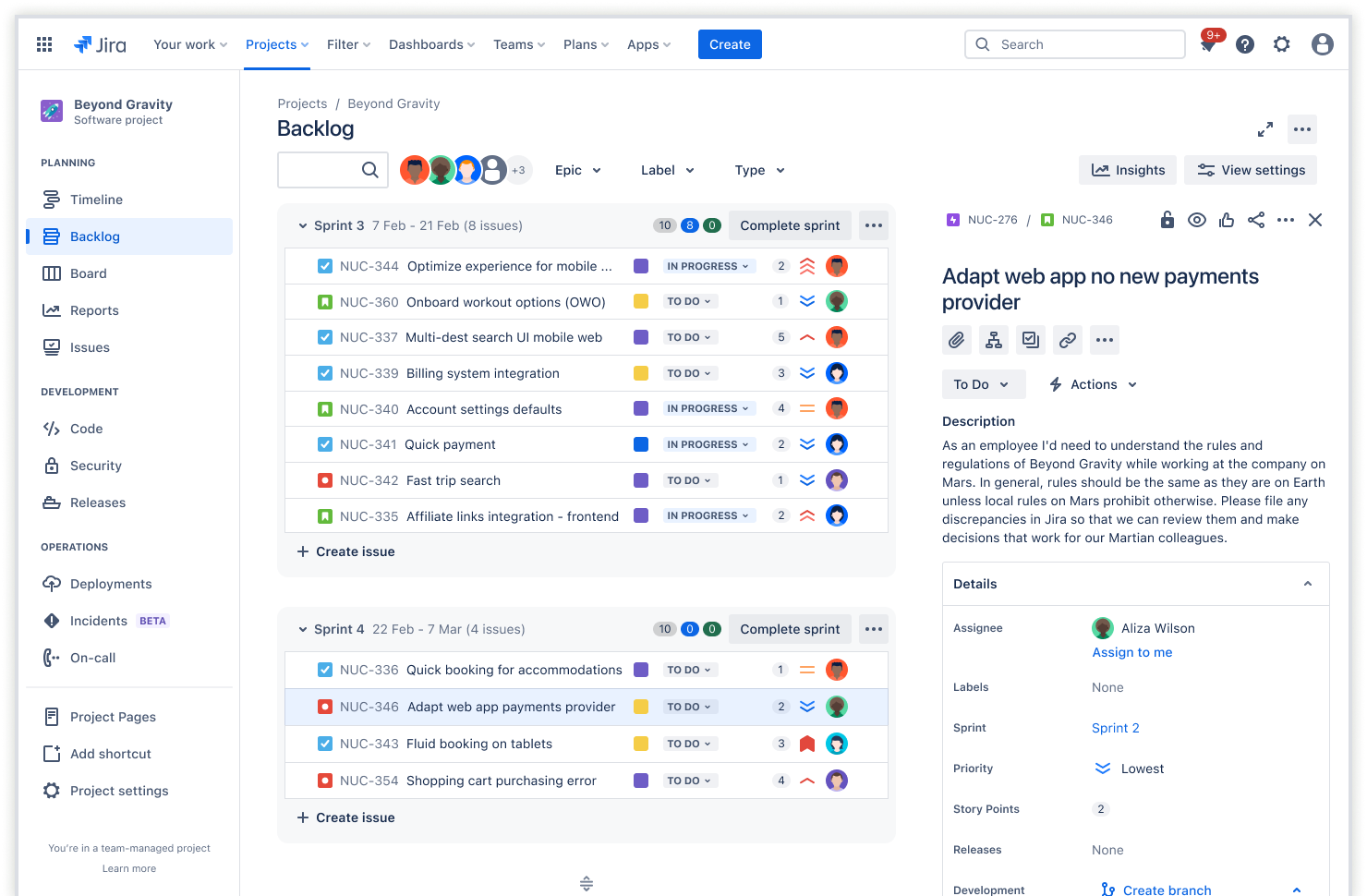
Backlog refinement
An Agile roadmap template enables backlog refinement by allowing teams to update and prioritize their product backlog in response to feedback, evolving requirements, and shifting priorities. The roadmap facilitates sprint planning by breaking the prioritized backlog into smaller, manageable tasks, allocating them to specific sprints, and providing a visual guide for the team's focus and progress within each iteration.
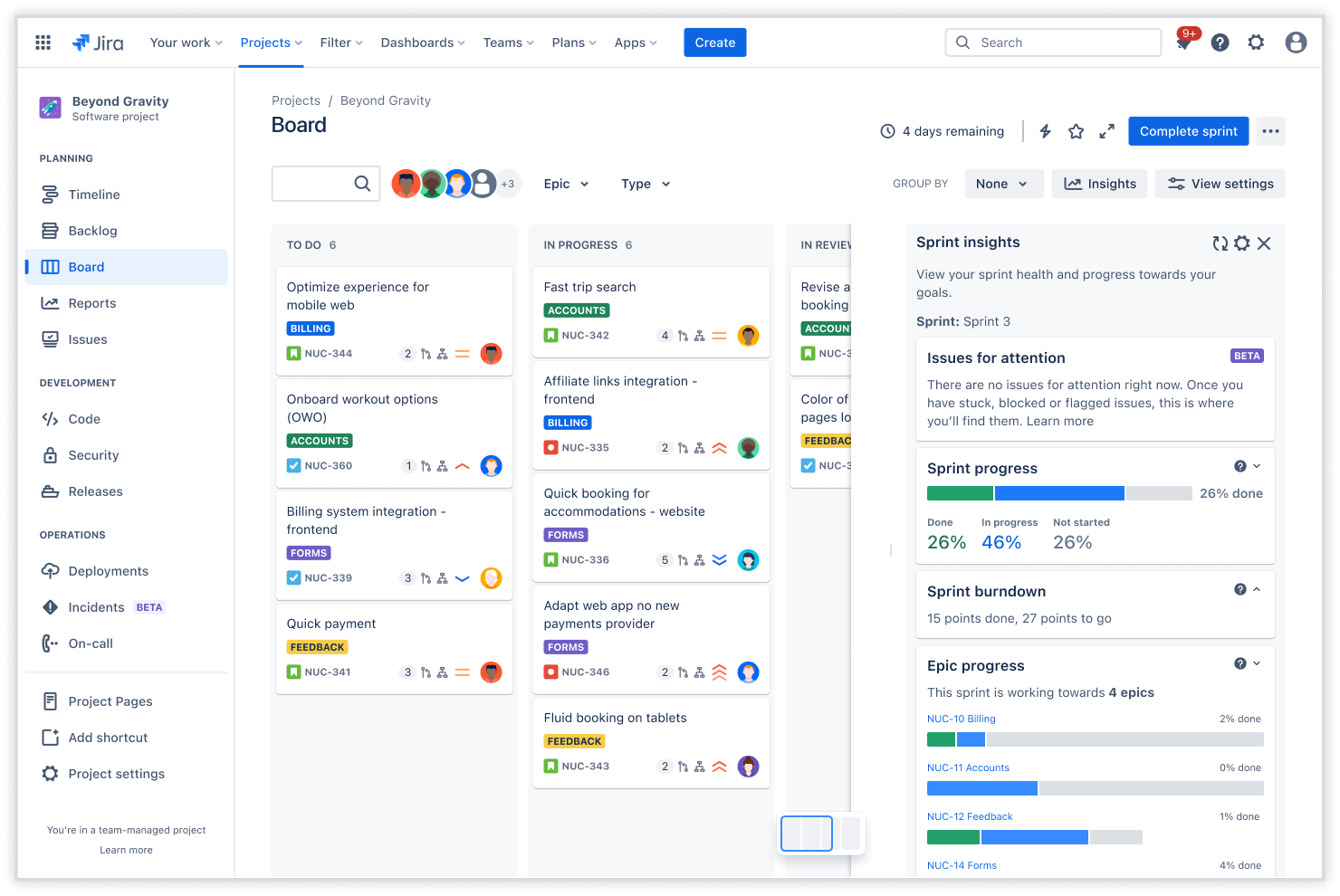
Sprints
This template helps with sprint planning by dividing the backlog into smaller, more manageable tasks tailored to specific sprints. These templates help to ensure sprint objectives align with project goals, enable visualization of incremental steps, and promote a more coordinated effort during sprint planning. By aligning sprint objectives with project goals, teams can visualize the steps needed to achieve goals and ensure everyone involved in the planning process is working toward the same objectives.
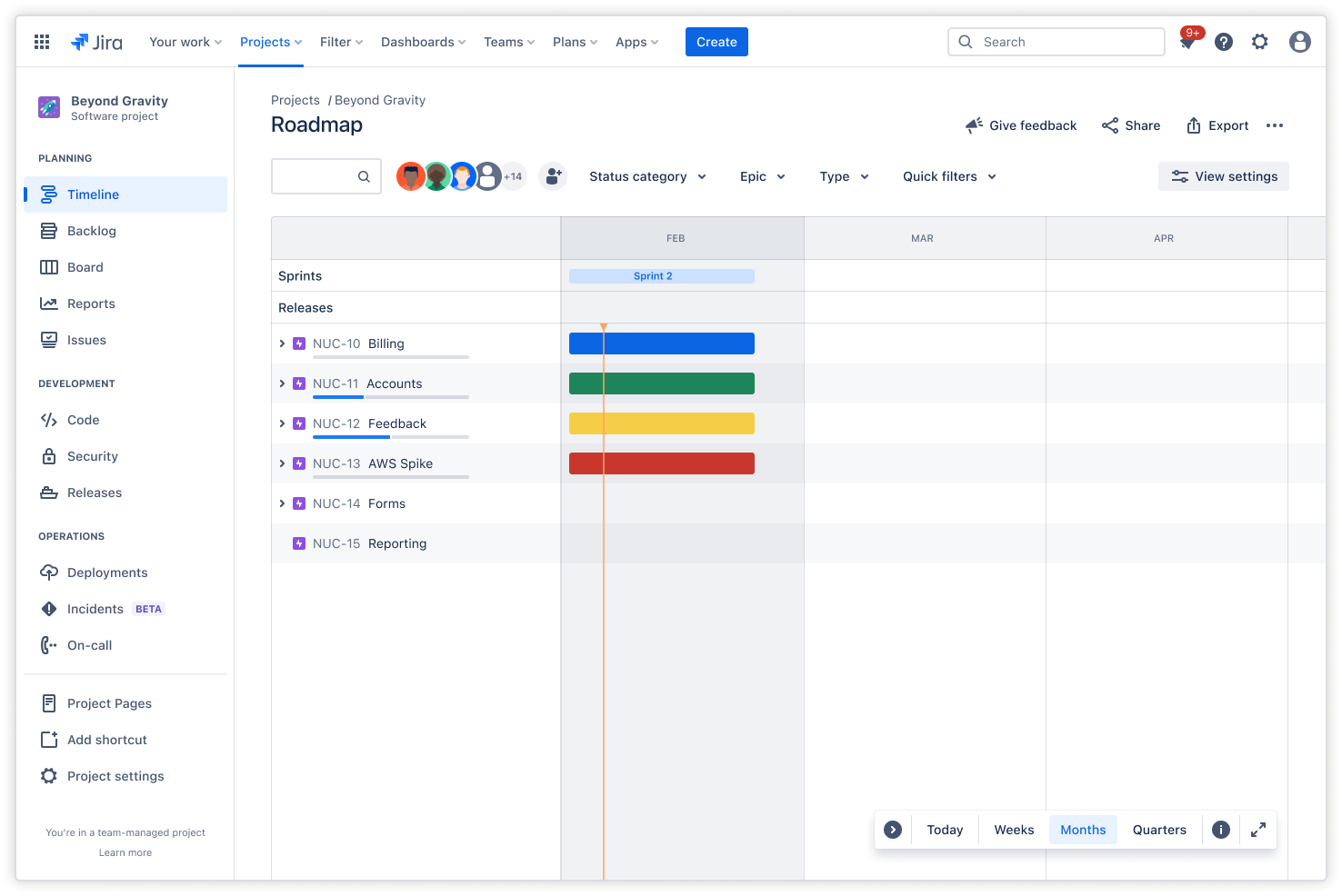
Timelines
Create an interactive timeline by adding epics and mapping work items, dependencies, and releases. Timelines visually represent a project's progress over time and keep your teams and stakeholders in sync. During retrospectives, timelines provide a historical overview of the project's phases, milestones, and key events. They offer a concrete reference point for teams to reflect on what worked well, where challenges arose, and how different tasks or dependencies affect the project's overall timeline.
Analyzing the timeline during Agile retrospectives facilitates regular team performance and process reviews. During Agile retrospectives, the Agile roadmap template fosters discussions on improvements and guides adjustments for future sprints and project iterations.
How to get started with an Agile roadmap template
- 1
Define product vision
Establish a clear product vision that aligns with the project’s goals. An Agile roadmap should include the product’s purpose, target audience, key features, and value. Agile roadmap templates allow for a structured approach that aligns with your broader vision while breaking the product development process into manageable sprints or iterations. Product roadmaps are also an option: They offer a strategic overview of a product's evolution that focuses on long-term goals, significant milestones, and key initiatives—without specifying individual sprints or iterations.
- 2
Create a backlog
To compile and refine a comprehensive backlog for an Agile roadmap template, follow these steps:
Gather stakeholder input. Engage with stakeholders, including customers, users, and team members, to collect requirements, ideas, and feedback.
List and prioritize user stories. Find and document user stories representing the product’s functionalities, features, and needs.
Estimate effort and complexity. Assign relative estimates to measure the effort and detail required for user stories.
Refine and iterate. Refine the backlog continuously by adding, removing, splitting, and updating priorities based on feedback and evolving requirements.
Collaborate and review. Encourage team collaboration to regularly review and validate the backlog for accurate requirements, changes, and new insights.
Maintain transparency. Keep the backlog visible and accessible for transparency and alignment with requirements and priorities.
- 3
Divide into sprints
Use sprints to complete prioritized tasks. Consider the team’s capacity and priorities when breaking down the product backlog. This process typically includes:
Backlog refinement: Review, edit, and prioritize the product backlog before selecting items for the upcoming sprint.
Estimation and capacity planning: Gauge backlog effort based on team velocity, availability, and external constraints.
Selecting sprint items: Choose items that fit the sprint duration while aligning with the team’s capabilities.
Creating sprint goals: Define clear and achievable goals. Ensure that the selected items contribute to these objectives.
Daily execution and adaptation: Collaborate with the team to track progress. Adapt to unforeseen challenges or shifting priorities during the sprint.
Review and run a retrospective: After each sprint, review completed work against goals. Conduct a retrospective to improve team performance and processes for future sprints.
- 4
Set goals and milestones
Set measurable goals and milestones while roadmapping in Agile to gain these benefits:
Tangible benchmarks: Agile roadmap templates enable teams to gauge how far they’ve come. They also identify what tasks remain within specific timeframes.
Focus and direction: Defined milestones allow teams to break down larger objectives into smaller, achievable tasks.
Motivation and accountability: Measurable goals create a sense of accomplishment. They also motivate the team by providing visible markers of success.
Adaptability and adjustments: Clear milestones allow for regular evaluation and adjustment. This keeps objectives in sight despite changes in circumstances.
Stakeholder communication: Measurable goals and milestones help communicate progress to stakeholders.
- 5
Conduct collaborative planning
Agile planning succeeds through collaboration with cross-functional teams, stakeholders, and product owners. These tips can help facilitate practical planning within this framework:
Encourage diverse participation. Invite all stakeholders. Create an open and comfortable environment for sharing insights and ideas during planning sessions by actively encouraging contributions from everyone involved. To ensure this environment, create ground rules that promote respectful communication, and acknowledge each participant's unique insights to foster a comfortable space for sharing ideas without fear of judgment. Facilitation techniques, such as round-robin discussions or anonymous idea submissions, can encourage participation and ensure quieter voices can contribute meaningfully.
Promote iterative discussions. Break down complex tasks into smaller parts. Discuss with the team, gather diverse viewpoints, identify dependencies, and refine requirements iteratively.
Utilize visual aids and Agile tools. Whiteboards, sticky notes, and digital tools such as Gantt Charts can help improve planning through visual representations of task durations and interdependencies. Kanban boards can also aid teams in visualizing their work, identifying bottlenecks, and making adjustments to improve processes.
Facilitate collaborative decision-making. Involve all team members and stakeholders in decision-making to foster commitment and ownership.
- 6
Promote continuous improvement
Refine and evolve your approach throughout the project lifecycle by encouraging regular feedback loops. These can provide valuable insights from users, stakeholders, and team members.
Embrace feedback, and use it to make incremental adjustments. An iterative approach creates a culture of continuous improvement. This can help you meet evolving needs in an ever-changing environment.
Jira Software can help you maintain a culture of continuous improvement.
Related templates
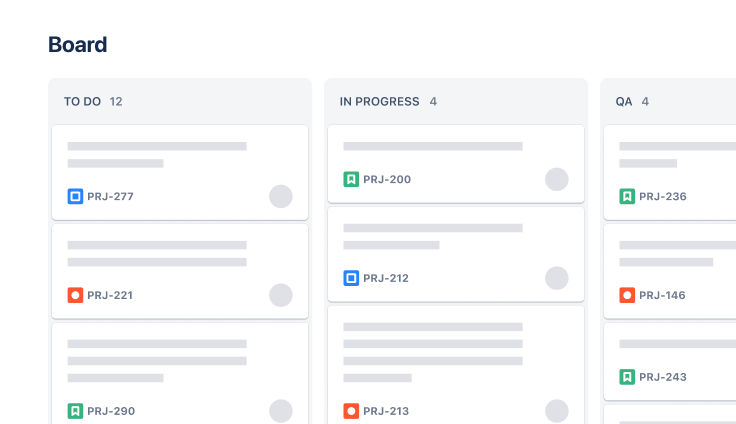
Software Development
Product breakdown structure template
Ensure teams increase efficiency.
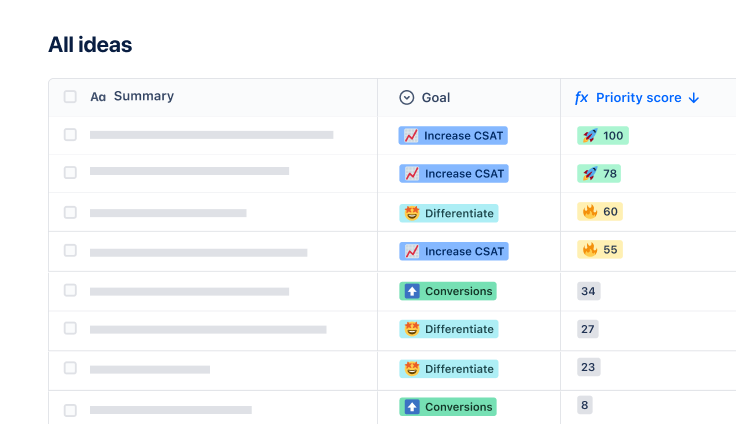
Software Development
Product strategy template
Define and carry out product goals seamlessly.
